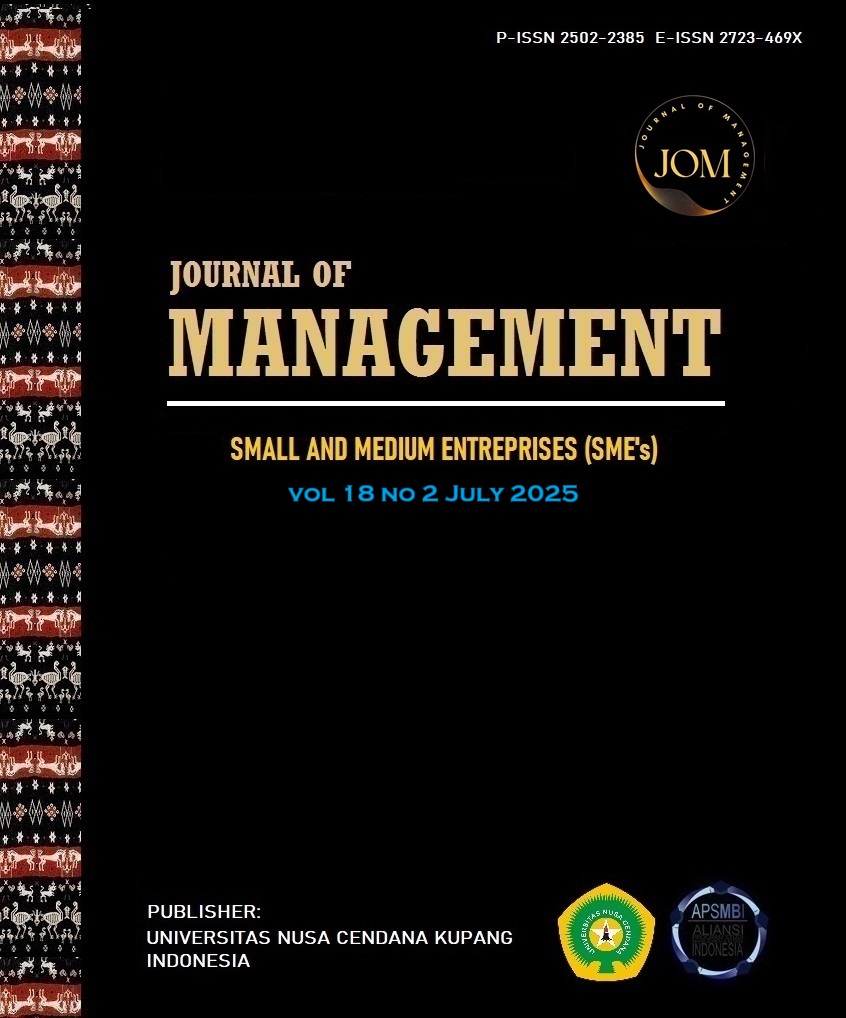ANALYSIS OF THE STABILITY OF THE BURUNDIAN FINANCIAL SECTOR: APPLICATION OF THE POISSON MODEL
Abstract
This study aimed to analyze the effects of Burundian banks' activities on the stability of the Burundian financial system. The data used in this study come from the Bank of the Republic of Burundi and cover the financing activity of Burundian banks for the period 2018 to 2023. By applying the fish model, the econometric results revealed highly interesting findings leading to economic policies to improve the stability of the Burundian financial sector. For illustration, the financing of short-term trade receivables has a positive effect on the stability of the Burundian financial sector, while export credit has a negative effect on the stability of the financial sector. These results reveal a low contribution from products originating in Burundi, thus contributing to the instability of the Burundian financial sector through the deterioration of the credit portfolio. To solve this problem, the Burundian government needs to put in place incentive policies aimed at developing the business sector so as to ensure not only production but also the processing of local products with high added value prior to export. Similarly, Burundian banks must comply with the prudential and non-prudential measures laid down by the central bank in order to improve the stability of the financial sector. To achieve this, Burundian banks need to design and implement more appropriate technology for exchanging borrower data in order to improve transparency and reduce fraud in credit transactions.
Keywords : Financial Stability; Poisson's Law; Burundi
Downloads
References
Abdoulrahman A. et al. (2024). Economic impacts of the Russia-Ukraine Conflict on Developing Countries: A focus on Agriculture, Industry, and Food Security. Research Journal of Social Sciences & Economics Review, 5(1), 1–15.
Andersone, E., & Bogdanova, O. (2013). The Role of Export Credit Guarantees in the Improvement of Business Environment in the European Union. Economics and Business, 24(2013), 6–13.
Arndt, C., Diao, X., Dorosh, P., Pauw, K., & Thurlow, J. (2023). The Ukraine war and rising commodity prices: Implications for developing countries. Global Food Security, 36(March), 100680.
Banque de la République du Burundi. (2022). Rapport sur la Stabilite financiere, année 2022.
D’Mello, R., & Toscano, F. (2020). Economic policy uncertainty and short-term financing: The case of trade credit.
Journal of Corporate Finance, 64(octobre 2020), 101686.
Dell’Ariccia G, D Igan, L Laeven, H. T. (2016). Credit booms and macrofinancial stability. Economic Policy, 31(86), 299–355.
Eke M. (2019). Poisson Regression Analysis on Economic Determinants of Commercial Banks Branches Expansion in Nigeria. South Asian Journal of Social Studies and Economics, 5(2), 1–8.
Gulmira, U. (2023). Theoretical basis of management of the financial stability of the banking system. International Journal of Advance Scientific Research, 03(05), 126–130.
Huang, J., Liu, B., & Shi, Z. (2023). Determinants of Short-Term Corporate Yield Spreads : Evidence from the Commercial Paper Market. Review of Finance, 27(2), 539–579.
Kinini, D. M., Ocharo, K. N., & Wang, P. (2023). Do income diversification and capital adequacy affect liquidity creation ? A case study of commercial banks in Kenya. Cogent Business & Management, 10(2), 1–18.
Kobugabe, C., & Rwakihembo, J. (2022). Financial Resource Mobilisation Strategies And Financial Sustainability: Empirical Evidence From Private Universities In Uganda. American Journal of Finance, 7(1), 18–33.
Li, T., Trinh, V. Q., & Elnahass, M. (2023). Drivers of Global Banking Stability in Times of Crisis : The Role of Corporate Social Responsibility. British Journal of Management, 34(2023), 595–622.
Min, F., Wen, F., Xu, J., & Wu, N. (2023). Credit supply , house prices , and financial stability. International Journal of Finance &bEconomics, 28(2), 2088–2108.
Mody A. & Nedeljkovic M. (2018). Central Bank Policies and Financial Markets : Central Bank Policies and Financial Markets : Lessons from the Euro Crisis (Issue 7400). https://doi.org/Category 7: Monetary Policy and International Finance
Nakatani, R. (2023). Does debt maturity influence productivity ? Economics Bulletin, 43(1), 116–136.
Ntwiga, D. B., & Wafula, A. W. (2021). Financial Health of Women : A Poisson Regression Analysis Approach. Journal of Finance and Economics, 9(6), 209–213.
Ozili, P. K. (2020). Financial Stability : Does Social Activism Matter ? Journal of Financial Regulation and Compliance, 28(1), 183–214.
Pícha, J., Tomek, A., & Schneiderová, R. (2016). Success factors of export financing under the buyer ’ s credit scheme. Procedia Engineering, 164(June), 323–330.
Scott, A. O., Amajuoyi, P., & Adeusi, K. B. (2024). Advanced risk management solutions for mitigating credit risk in financial operations. Magna Scientia Advanced Research and Reviews, 11(1), 212–223.
Shin, S., Hook, S., & Ibrahim, M. H. (2016). Credit expansion and fi nancial stability in Malaysia. Economic Modelling, 61(October), 1–12.
Stiglitz, J. E. (1990). Peer monitoring and credit markets. The Economics of Rural Organization, 4(3), 70–86.
Turguttopbas, N. (2013). Export Credit Agency Activities in Developing Countries. The International Trade Journal, 27(3), 281–319.
Zheng, L., Liao, J., Yu, Y., Mo, B., & Liu, Y. (2023). The effect credit term structure of monetary policy on firms ’ “ short-term debt for long-term investment ” behavior : empirical evidence from China. Electronic Research Archive, 31(December 2022), 1498–1523.

 Théogène Nsengiyumva(1*)
Théogène Nsengiyumva(1*)



